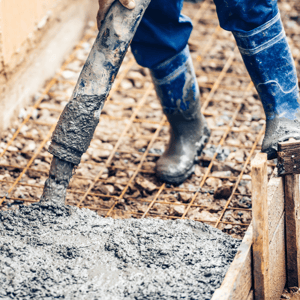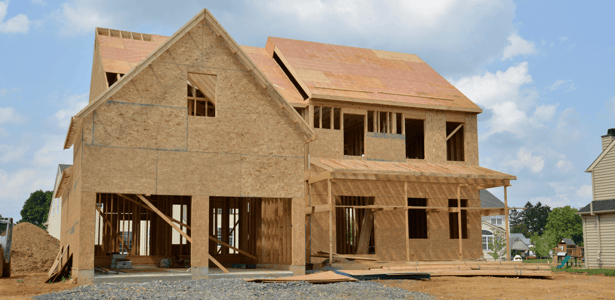Rain, wind, snow or shine, a good builder will work hard to complete your home in a timely fashion. One misconception prospective new home buyers have about the construction process is when the weather gets rough, all work ceases. While it's true your builder may not work in a torrential downpour (that's just dangerous!), they will continue to work on your home in most weather, all year long.
This is great news because when you build your dream home, you can rest assured the work is getting done. One of the many advantages of a new home build is the ability to decide when you want to start - and starting in fall or winter nearly guarantees your home will be ready for spring!
Now, that being said, there are a few jobs that will need to wait until the warmer weather arrives. The following are a few items that, like many of us, prefer the warmer weather.
Concrete
Laying concrete for your driveway and sidewalk is usually the first seasonal related job. In order to complete as many lots as possible during the construction season, this work is not determined by your possession date, but by how much work needs to be done in the community as a whole. This allows crews to complete work on as many lots as possible at once.
If you are already living in your home when the concrete is poured, it's important you don’t use it right away. Concrete requires 28 days to cure, to give it maximum strength. Driving or walking in it before then can lead to premature damage. You'll also want to ask your builder if a sealant will be sprayed to provide the concrete more protection from the elements.
Rough Grading
The process of rough grading your lot ensures the foundation walls are backfilled and the lot is shaped so drainage water moves away from your home.
This important job cannot be completed until after the concrete on your lot has been poured and cured to maximum strength. Rough grading must also be done during a dry period to ensure water in the soil doesn’t alter the shape of the lot after it dries. Due to this, crews may have to wait for up to five days after wet weather to start or complete a rough grade.
Once your builder has completed the rough grade, a lot inspector from your municipality will come to ensure it’s been done according to engineering plans. Once approved, a rough grade certificate is provided. It's important to know that it may take two seasons to receive your rough grade certificate after approval.
 Stairs
Stairs
Permanent stairs leading from your driveway or walkway, most often constructed from concrete, cannot be installed until after you have received your rough grade certificate. For this reason, your builder will install temporary steps leading up to your front door and will return after the rough grade approval to install permanent stairs.
Fencing
Part of building early in a new community is knowing when it's time to install your fence. Unlike most other seasonal work, you may be responsible for installing your own fencing. In some cases, the developer of your community may build a fence on your property (usually when your property runs along a busy roadway or a green space), but in all other situations, you'll be expected to do it yourself.
Remember, you won’t be able to set up your fence until after the rough grade of your lot, and the lot of the adjacent neighbour, is approved. Installing a fence before the rough grade means you’ll have to remove it in order for crews to properly grade both lots.
Exterior Paint
If your home requires exterior paint, this is something that has to be done during a dry period. Similar to how concrete work is completed, crews will come to a community to complete as much work as possible at one time. If your home is not ready to be painted when the crew arrives, it will be completed upon the next visit. This ensures any painting required is done as quickly as possible.
Final Grading
Unless landscaping has been included in the purchase of your home, the final grade approval is the responsibility of the homeowner. The expense of getting your final grade, including the contractor, labour, materials, and Bobcat services, will also be up to the home owner. You will need to apply for an inspection by providing your rough grade certificate, at which point a surveyor will come out to inspect and approve your final grade.
Extra costs aside, you may consider hiring someone to do this work for you as it is labour intensive and requires someone who knows what they are doing. Also keep in mind, if you wait longer than one year to get your final grade certificate (from the approval date), your municipality may fine you. Don't wait too long!
Landscaping
If the purchase of your home includes landscaping, this will not be an issue. But if not, this will need to be completed during the summer months. Be sure to consult the landscaping guidelines for your community, as they will outline the minimum requirements put in place by the land developer. Once you’ve completed the landscaping, you builder will inspect the work done to ensure it meets the requirements, and you'll have your landscaping deposit returned to you.
By understanding how seasonal work affects your new home build, you'll have a better idea as to what to expect from your builder. This will also give you an idea as to what aspects of the build you may be responsible for as a homeowner. Remember, regardless of timelines or responsibilities, a good home builder will keep you informed every step of the way.




